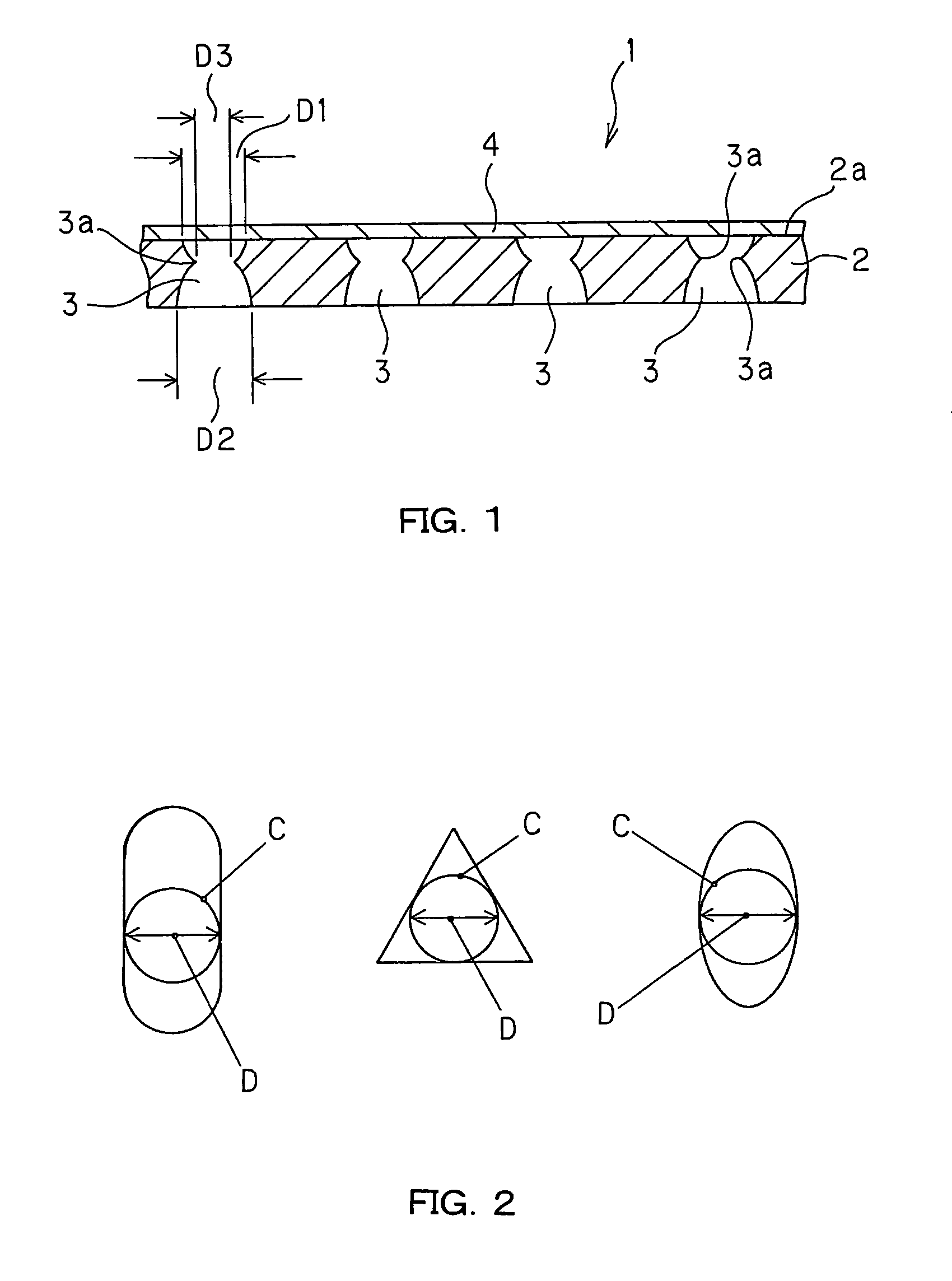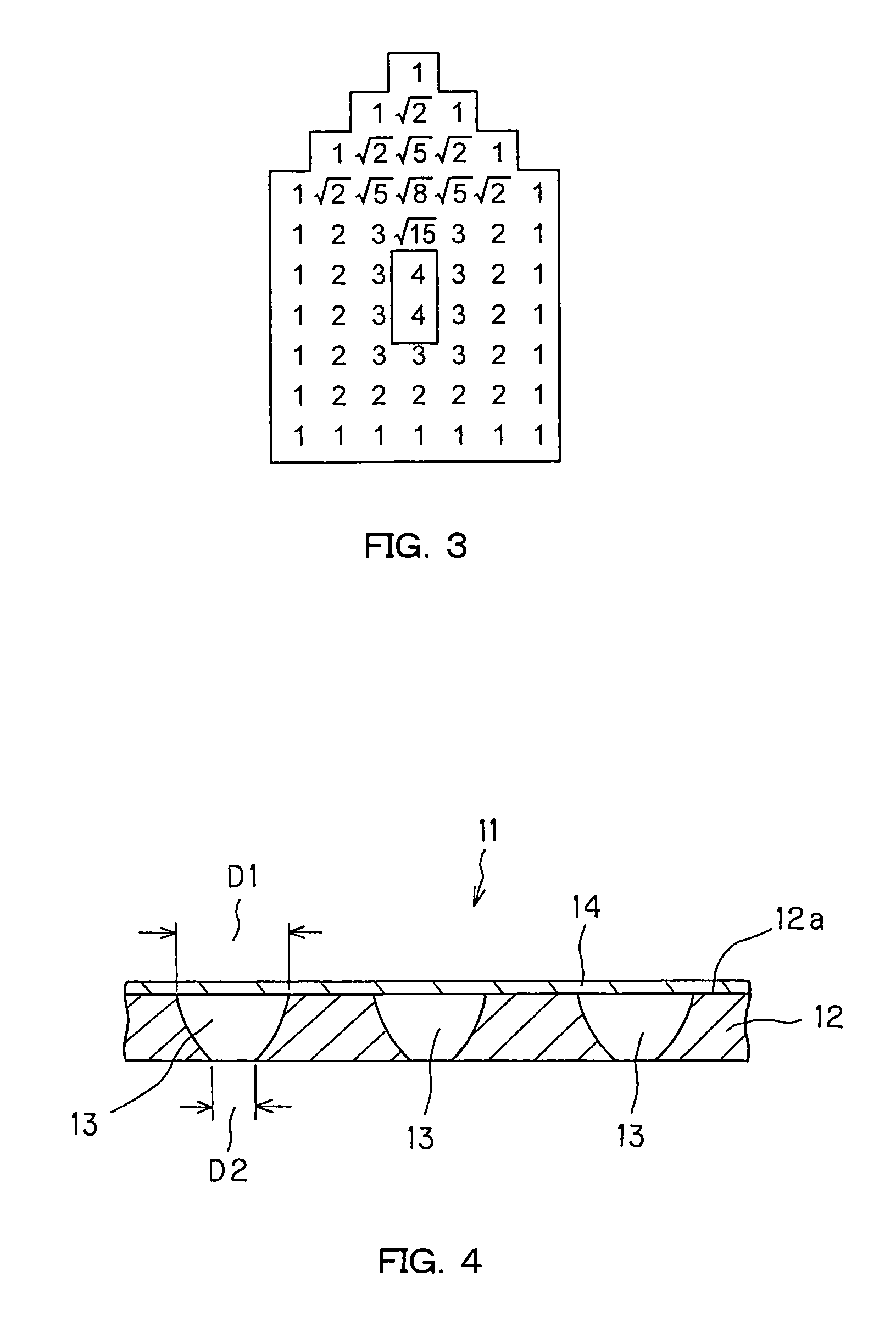Filter for purifying hydrogen and method for manufacture thereof
a technology of purifying membrane and filter, which is applied in the direction of inorganic chemistry, chemical/physical processes, cable/conductor manufacturing, etc., can solve the problems of low yield, less than satisfactory durability of pd alloy film, and much worse performance, so as to facilitate the fabrication of the hydrogen permeation effect and improve the hydrogen permeation efficiency
- Summary
- Abstract
- Description
- Claims
- Application Information
AI Technical Summary
Benefits of technology
Problems solved by technology
Method used
Image
Examples
example 1
[0102]A SUS304 material with a thickness (T) of 50 μm was used as the electrically conductive support substrate, and a photosensitive resist material (OFPR made by Tokyo Ohka Kogyo Co., Ltd.) was coated on both surfaces of the SUS304 material by means of dipping (at a coating amount of 7 μm as measured on a dry basis). Then, a photomask A having a plurality of circular openings, each having an opening size (diameter) of 30 μm, at a pitch of 120 μm was placed on one of the above resist coating films while, at the same time, a photomask B having a plurality of circular openings, each having an opening size (diameter) of 55 μm, at a pitch of 120 μm was placed on the other resist coating film. Via those photomasks A and B, the resist coating films were exposed to light, and then developed using sodium hydrogencarbonate. Here, the center of each opening in the photomask A was in alignment with the center of each opening in the photomask B with the SUS304 material placed between them.
[010...
example 2
[0126]A SUS304 material with a thickness (T) of 50 μm was used as the electrically conductive support substrate, and a photosensitive resist material (OFPR made by Tokyo Ohka Kogyo Co., Ltd.) was coated on both surfaces of the SUS304 material by means of dipping (at a coating amount of 7 μm as measured on a dry basis). Then, a photomask C having a plurality of circular openings, each having an opening size (diameter) of 65 μm, at a pitch of 150 μm was placed on one of the above resist coating films while, at the same time, a photomask D having a plurality of circular smaller openings, each having an opening size (diameter) of 30 μm, at a pitch of 150 μm was placed on the other resist coating film. Via those photomasks C and D, the resist coating films were exposed to light, and then developed using sodium hydrogencarbonate. Here, the center of each opening in the photomask C was in alignment with the center of each opening in the photomask D with the SUS304 material placed between t...
PUM
| Property | Measurement | Unit |
|---|---|---|
| pressure | aaaaa | aaaaa |
| thickness | aaaaa | aaaaa |
| thickness | aaaaa | aaaaa |
Abstract
Description
Claims
Application Information
 Login to View More
Login to View More - R&D
- Intellectual Property
- Life Sciences
- Materials
- Tech Scout
- Unparalleled Data Quality
- Higher Quality Content
- 60% Fewer Hallucinations
Browse by: Latest US Patents, China's latest patents, Technical Efficacy Thesaurus, Application Domain, Technology Topic, Popular Technical Reports.
© 2025 PatSnap. All rights reserved.Legal|Privacy policy|Modern Slavery Act Transparency Statement|Sitemap|About US| Contact US: help@patsnap.com



